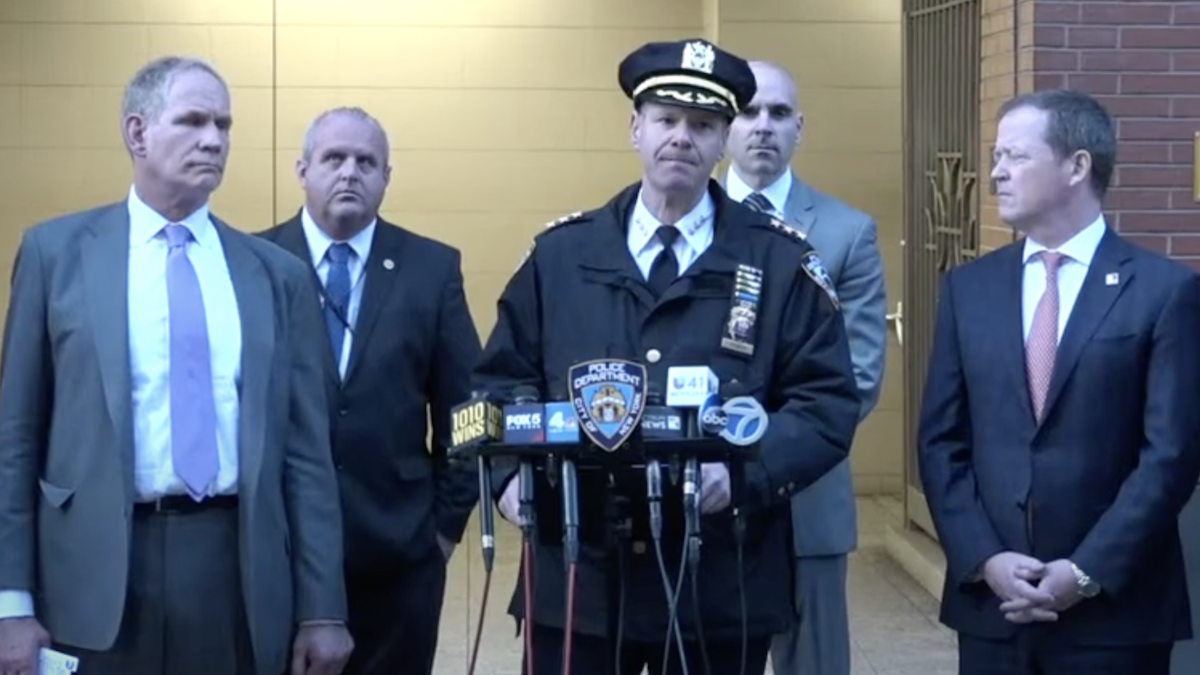
Roger Stone went to trial and lost. As a result, he’s likely going to be sentenced to some jail time. The question is, how much jail time is appropriate in his case?
Federal sentencing has two components. The first is the statutory range (what’s provided for by the statute—e.g., five to 40 years). Here, two of the crimes for which Stone was convicted (obstructing a congressional investigation and false statements to Congress) provide for a sentence of zero to five years, and the third (witness tampering) provides for a sentence of zero to 20 years.
The second component of federal sentencing is the Federal Sentencing Guidelines issued by the U.S. Sentencing Commission. The guidelines are a complicated set of rules that use a point system to calculate an offense level and a resulting sentencing range.
How the Sentencing Guidelines Work
For many years, the guidelines were mandatory. That meant a judge had to sentence a defendant within the guidelines range. However, in 2005, the Supreme Court ruled that the guidelines, which allow judges to enhance sentences using facts not reviewed by juries, violated the Sixth Amendment right to trial by jury.
The court ruled that the guidelines had to be only advisory and invalidated the provisions that made them mandatory. Indeed, the Supreme Court later ruled that not only are the guidelines not mandatory, they are also not presumed to be reasonable.
Typically, when a defendant enters a plea agreement, the parties agree to the applicable guidelines range. But if a defendant goes to trial and loses, the parties each present a guidelines calculation to the court. In Stone’s case, when the government filed its sentencing memorandum, it calculated a guidelines range of 87 to 108 months, or roughly seven to nine years.
I’m a federal criminal defense attorney. This range shocked me as unduly high given the non-violent nature of the underlying crimes. To provide some perspective, a multitude of violent crimes come with lower guidelines calculations. For example, if you use a gun during a crime of violence or drug trafficking, the guidelines range is 60 months; if you brandish a gun during the same, the guidelines range is 84 months.
How the Government Got to Nine Years
In Stone’s case, the government’s calculation relies on several guidelines enhancements. Generally speaking, certain conduct can increase the offense level guidelines calculation. Here, the base offense level is 14, but with all of the enhancements the government argued for, it jumped to 29.
One enhancement the government recommended jumped out. The government argued that an eight-point enhancement is warranted because Stone’s obstruction of justice “involved causing or threatening to cause physical injury to a person, or property damage.” The government pointed to two particular comments by Stone to a witness: “Prepare to die, c-cksucker” and him threatening to “take that dog away from you.”
Standing alone, it’s not clear these rise to the level of a “violent threat” as required by the enhancement. In fact, I would argue that this is not a case where “reasonable minds” can disagree. This enhancement is a stretch. Particularly significant is that the individual who was the recipient of these “threats” testified at trial that he did not seriously believe Stone would follow through on his so-called threats.
When I did a quick search of D.C. Circuit cases applying this enhancement, I couldn’t find anything. That’s not to say it would never apply, but the infrequency which with the enhancement seems to be used is somewhat telling.
A Big Jump On a Weak Foundation
The guidelines contain commentary by its drafters. The commentary is meant to further explain the provisions. Here, the guidelines commentary to this enhancement notes that it should “reflect the more serious form of obstruction.” This likely explains why the enhancement is reserved for the more serious, palpable threats.
In its submission to the court, the government relies on cases outside its jurisdiction in support of the enhancement, but in none of those cases did the witness testify that he did not take the so-called threats seriously. What’s significant is that this eight-point enhancement increased the guidelines range from 37 to 46 months to 87 to 108 months. That’s a significant jump for a not so solid enhancement.
While it’s absolutely true that it’s standard practice for the federal government to recommend a guidelines sentence, this begs the question: What’s the appropriate guidelines calculation? As one Twitter user noted, “The Guidelines don’t calculate themselves.”
Stone’s lawyers objected to each of the enhancements the government proposed. On the eight-level enhancement discussed above, Stone’s lawyers cite numerous cases demonstrating why the enhancement should not apply here, and even quote from a letter to the court by the witness of the so-called threats, wherein he denies that he felt threatened and that he “chalked up [Stone’s] bellicose tirades to ‘Stone being Stone’ All bark no bite!” (Did he really have go there?)
Trump Comments, People Freak
This is where things begin to go off the rails. The government filed its sentencing submission on Feb. 10 at approximately 6:30 p.m. At 12:57 a.m. the following morning, Trump tweeted:
https://twitter.com/realdonaldtrump/status/1227109357726445568?s=21
First off, this isn’t the first and it certainly won’t be the last time that Trump weighs in on something that causes people to freak out. What reliably follows is the slow drum beat of claims of presidential interference. There are now calls for an investigation, and for the impeachment of Attorney General William Barr.
Yet, as per usual, there is no evidence, and the president has denied, that he spoke to anyone at the U.S. Department of Justice about Stone’s sentencing. The New York Times reported that a DOJ spokesperson confirmed the DOJ did not consult with the White House regarding their revised recommendation to the court. That spokesperson also said Barr was not aware of the president’s tweet and that the decision to reel in the earlier sentencing recommendation had been made prior to Trump’s tweet.
Of course none of that stopped the internet from losing its mind.
Government Backs Down
The following day, the government filed a supplemental sentencing submission. In this memorandum, the government backed away from not only the eight-point enhancement, but the other enhancements as well. While the supplemental memorandum fell short of completely retracting the prior memorandum, its revised sentencing recommendation of a sentence “far less” than 78 to 108 months speaks volumes.
This memorandum was signed by acting chief of the criminal division in the D.C. U.S Attorney’s Office. He is a career prosecutor who prosecuted the terrorism case stemming from the Benghazi attack as well as the Blackwater investigation.
Is this revised recommendation unusual? Absolutely, I won’t deny that. However, CBS News reported that the DOJ was “shocked” at the recommendation and wasn’t briefed in that direction:
#RogerStone Senior DOJ official tells @CBSNews Department was shocked to see sentencing recommendation Stone case. This is not what was briefed to Dept. The Dept. believes recommendation is extreme, excessive, grossly disproportionate to offenses…#DEVELOPING
— Catherine Herridge (@CBS_Herridge) February 11, 2020
Shortly thereafter, in dramatic fashion, the four assistant U.S. attorneys who prosecuted Stone’s case resigned. While none have made public statements, it’s likely that they felt betrayed by the DOJ’s reversal on its sentencing position.
But you know what, that’s life. Their boss made a decision they didn’t like, and they made a choice to resign. Even assuming arguendo it was a political decision, that application of at least one of the underlying enhancements was a complete stretch in this case. I would even go so far to say that in light of everything we know, including the witness testimony, pushing for the eight-point enhancement was acting in bad faith.
What’s so amazing to me is that the prospect of administering justice—which is what prosecutors are supposed to do—has outraged so many who oppose Trump.
I can’t help but think how different the reaction would be if President Obama intervened in a case and decided to cut a prison sentence short. Hypothetically speaking, let’s say someone was convicted of espionage—spying—and had his 35-year sentence reduced to six years by President Obama.
Oh, wait, no need to speak in hypotheticals—that happened. See Chelsea Manning.









